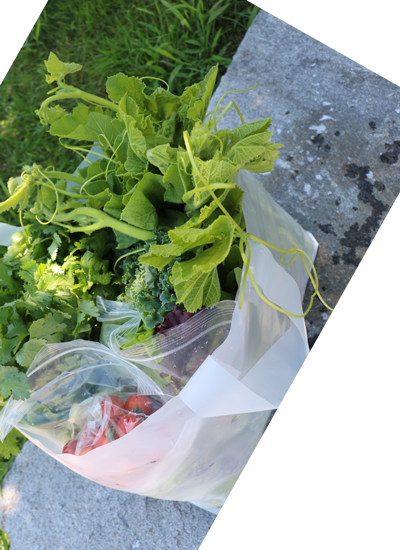Blog Reflection
This blog is from World Farmers' Intern Blog Series, featuring reflections written by 2017 and 2018 summer high school interns from Nashoba Regional High School. To read the full series, visit our blog page www.worldfarmers.org/blogs, and stay tuned! We will release a new blog in the series on alternating Fridays in February, March, and April, 2019.
Blog Reflection
By Grace Fiori, Nashoba Regional High School Summer Intern, Summer 2018
Before working at World Farmers, I was limited in my experience with growing food; I had worked in my family's garden and the urban community gardens that I was involved with.
There was quite a contrast, one that I don’t think I ever realized would be so stark, between working on the farm and working in a community garden. Farm work was more difficult, yes. There was a lot more produce to move and organize and harvest, yes. But there was also something so different between a green space still set in the hectic pace of the cit and the rural space of a farm of many acres.
The simple productivity of life on a farm was something I wasn’t used to. There's an end goal: harvest and sell the crop; there are the steps that need to be taken every week, every day, every month to get a good harvest. Complete them and you’re just about set.
Details I never had previously thought about made significant impacts and became important and essential on such a large scale. On my first day on Flats Mentor Farm during a pest walk with a UMASS entomologist, I learned about the diamondback moths that wriggle when you poke them, the larvae they become, and their decimating destruction to collards and kale. Just two little white “butterflies” can destroy a whole crop. I also learned about a wasp that lays its eggs in certain beetle eggs, killing the growing beetles and turning their “nest” - the internal organs of the beetle - a spiky brown mush. These natural pesticides are now being used to our benefit in a communal way. Not to mention- I had to rethink my standing on wasps being only bad guys.
Everything truly has a place. That's rule number one for farming. From the soil below you, to the animals around you, to the people you work with. Everything brings at least something to the table. 
The thing that I try to bring to the table is what to do with the crops once they arrive. I know they can seem baffing to CSA customers when they open up the bag in their kitchen and there's... amaranth? And lalu? They might begin to question their purchase. But these foreign crops really aren’t so foreign at all. They are just variations, other cultures’ staple crops, just like the ones we have, in our Market Baskets such as romaine, kale, or spinach. Often, like lalu, these cultural crops have even more nutritional value than those super foods we consume.
Food is a tradition that links people across borders and cultures. By expanding the varieties on our plates, we expand our perspective on the world and the communities that we may not be familiar with. Not to mention, amaranth stir-fried with garlic and tomatoes is pretty amazing!


